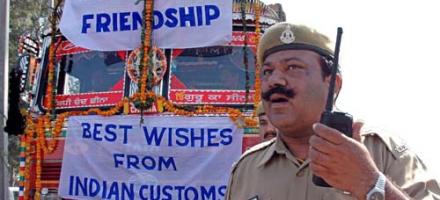Still waters, Strong currents
The resurrection of old bonds between the two Punjabs, in India and Pakistan, can decisively shift the affirmative discourse across the border
Tridivesh Maini Delhi
Few would have expected that the India-Pakistan commerce secretary-level talks in April 2011 would pave the way for such a drastic shift in the economic relationship between the countries. Tensions ensuing after the 26/11 Mumbai attacks were such that even basic engagement between the countries seemed a far cry.
In the past year, we have been witness to some significant developments such as Pakistan’s decision to confer Most Favoured Nation (MFN) status — in a phased manner — on India. And also Islamabad’s enthusiasm to import petroleum and power from India, and Pakistan President Asif Ali Zardari’s remark, during the course of his short but eventful India sojourn, that India and Pakistan should follow the China-India model of engagement, whereby economics and politics are de-hyphenated from each other.
There are numerous factors which have led to this thaw between the two South Asian neighbours. Obviously, the national leadership of both sides deserves credit for showing courage.
The Indian leadership, under the aegis of Dr Manmohan Singh, has gone ahead with the engagement in spite of the scepticism of a large section of the political set-up, including his own party, a significant percentage of the strategic community and even the media. Similarly, Pakistan’s civilian leadership’s unambiguous endorsement of the peace process by pushing for trade, without hyphenating it with any conditions — as was done in the past — is praiseworthy.
The unequivocal pitch for peace by New Delhi and Islamabad is even more laudable, considering that both dispensations are not on a very strong political wicket in the domestic realm — for different reasons, of course. The ruling UPA government’s image has been battered as a consequence of numerous corruption cases, the recent downturn in the economy, the pounding it received in the assembly elections held in five states earlier this year, and endless ally problems. In Pakistan, the ruling civilian government led by the Pakistan People’s Party (PPP) faced a major setback when Yousuf Raza Gilani was disqualified by the Supreme Court for not taking action against Zardari in a corruption case and had to be removed from his position as prime minister.
The tide of extremism in Pakistan’s Punjab needs to be countered by promoting Sufi philosophy — marginalised due to the domination of Wahabism
Thus, undoubtedly, the central leaderships across the border need to be credited for their abiding commitment to ameliorating the poor relations. Besides, it would be grossly unfair if one were not to recognise the role of ‘both the Punjabs’ which in the past decade have been pushing hard for closer ties — economic, cultural and political — between India and Pakistan.
For decades, the Indo-Pak conflict was often attributed to the animosity between East and West Punjab — separated in 1947. The reasons were obvious; the scars of the violent and tragic Partition, and, then, the wars of 1965 and 1971.
From the print issue of Hardnews :
